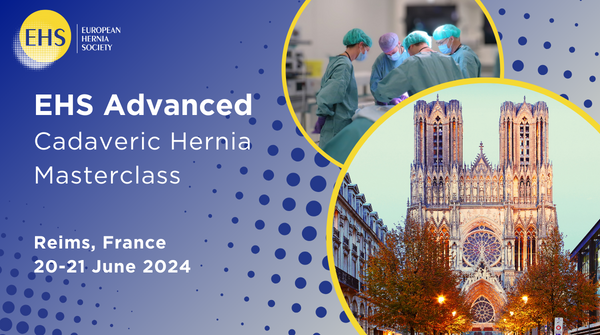Name: Pernille D. K. Diasso
Age: 32 years old
Where do you come from? Denmark
For how long have you been an EHS member?: For approximately one year
The everyday life as a young surgeon in Denmark is incredibly versatile and varied. The tasks at hand range from shift work, acute- and elective surgery, outpatient duties, and ward rounds. On a typical day at my department, I would start the day by attending the morning conference at 8:00 AM, where the operations and critical patients of the night shift are presented. Following that, I would proceed to the radiology conference to review all scans from the previous shift with the on-duty radiologist. Afterward, I would conduct ward rounds in the departments and in the intensive care unit between surgeries.
The day concludes with the afternoon conference at 3:00 PM, where the new shift team arrives to be briefed.
As a young surgeon, supervision is a great part of my day. Both the guidance I receive and the guidance I provide to my junior colleagues. Generally, there’s a significant exchange of knowledge every day, and that’s something I really appreciate at my department.
What is your favourite AWR procedure/ hernia surgery?
Endoscopic robotic-assisted retromuscular hernia repair (eTEP)
Why is it your favourite procedure?
Because this procedure offers several advantages over traditional surgery and has revolutionised ventral herniotomy. It provides a minimally invasive technique, reduces pain, lowers the risk of complications, and results in faster recovery. From the surgeon’s perspective the visualisation is enhanced along with better ergonomics.
Who inspired you to become a hernia enthusiast/ surgeon?
My two mentors, Dr. Frederik Helgstrand and Dr. Mette Willaume. Their work on the development of hernia surgery, both in daily practice and especially in their work with the Danish Hernia Database, is a huge source of inspiration. On a daily basis, they both oversee the training of the younger generation while creating a safe learning environment.
Please, give a small tip or trick to share for this or any other hernia procedure?
For me, the best tip has been to review CT scans with a senior colleague who is accustomed to interpreting scans. In this way, I prepare and fully understand each case and the decisions behind (e.g. mesh type, fixation method). It provides a completely unique 3D understanding that can be utilised in the operating room. Another highly valuable tip I got from a mentor is patience. Thorough dissection in the correct planes is the key to hernia surgery, and to achieve that, it requires being calm and patient.
Have you attended an EHS congress, meeting, or course?
No, not yet unfortunately. But I am currently working on a lot of hernia-related research: both regarding robot-assisted ventral herniotomy, but also in the very exciting area within education in robotic surgery. I hope to present some interesting findings at EHS congresses over the next few years.
However, I stay updated by participating in meetings/courses at the Hernia Basecamp.
How can the EHS help you in the future?
EHS generally has a lot of really good initiatives that allow me, as a younger surgeon, to find information and expand my knowledge. The hope with my membership in EHS is for me to create an international network, so the exchange of knowledge becomes even greater than it is today.
What is your dream for your future in hernia surgery?
My future dream is definitely to become a certified hernia surgeon. Further, I am working on research within surgical education in robotic surgery, which I hope will lead to some interesting collaborations and guidelines.

